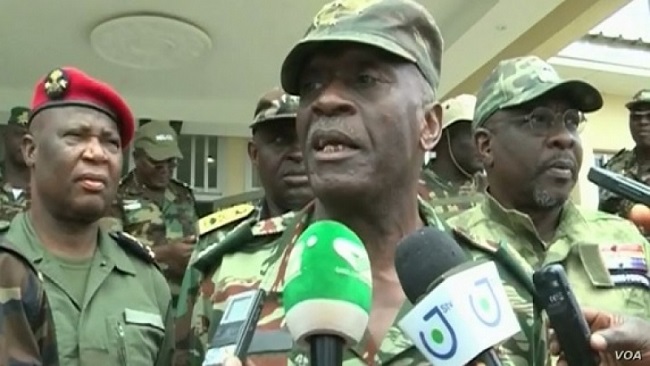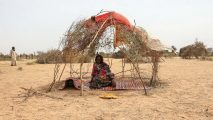Categories
Archives
- April 2024
- March 2024
- February 2024
- January 2024
- December 2023
- November 2023
- October 2023
- September 2023
- August 2023
- July 2023
- June 2023
- May 2023
- April 2023
- March 2023
- February 2023
- January 2023
- December 2022
- November 2022
- October 2022
- September 2022
- August 2022
- July 2022
- June 2022
- May 2022
- April 2022
- March 2022
- February 2022
- January 2022
- December 2021
- November 2021
- October 2021
- September 2021
- August 2021
- July 2021
- June 2021
- May 2021
- April 2021
- March 2021
- February 2021
- January 2021
- December 2020
- November 2020
- October 2020
- September 2020
- August 2020
- July 2020
- June 2020
- May 2020
- April 2020
- March 2020
- February 2020
- January 2020
- December 2019
- November 2019
- October 2019
- September 2019
- August 2019
- July 2019
- June 2019
- May 2019
- April 2019
- March 2019
- February 2019
- January 2019
- December 2018
- November 2018
- October 2018
- September 2018
- August 2018
- July 2018
- June 2018
- May 2018
- April 2018
- March 2018
- February 2018
- January 2018
- December 2017
- November 2017
- October 2017
- September 2017
- August 2017
- July 2017
- June 2017
- May 2017
- April 2017
- March 2017
- February 2017
- January 2017
- December 2016
- November 2016
- October 2016
- September 2016
- August 2016
- July 2016
- June 2016
Featured
 Bishop Francis T. Lysinge @ 25!
Bishop Francis T. Lysinge @ 25!  Understanding the Biya Francophone regime’s support for the Israeli genocide in Gaza
Understanding the Biya Francophone regime’s support for the Israeli genocide in Gaza  Poverty under Biya: Cameroonians embrace Chinese language for brighter futures
Poverty under Biya: Cameroonians embrace Chinese language for brighter futures  Cameroon is broken: Who can fix it?
Cameroon is broken: Who can fix it?  Ethiopia: U.S Senator Cardin Statement on the Killing of Bate Urgessa
Ethiopia: U.S Senator Cardin Statement on the Killing of Bate Urgessa
Most Commented Posts
 4 Anglophone detainees killed in Yaounde
4 Anglophone detainees killed in Yaounde
19 comments Chantal Biya says she will return to Cameroon if General Ivo Yenwo, Martin Belinga Eboutou and Ferdinand Ngoh Ngoh are sacked
Chantal Biya says she will return to Cameroon if General Ivo Yenwo, Martin Belinga Eboutou and Ferdinand Ngoh Ngoh are sacked
13 comments Anglophone Nationalism: Barrister Eyambe says “hidden plans are at work”
Anglophone Nationalism: Barrister Eyambe says “hidden plans are at work”
12 comments The Anglophone Problem – When Facts don’t Lie
The Anglophone Problem – When Facts don’t Lie
12 comments Largest wave of arrest by BIR in Bamenda
Largest wave of arrest by BIR in Bamenda
10 comments
Latest Tweets
Featured
-

Bishop Francis T. Lysinge @ 25!
-

10 Million Cameroonians lived on less than $1.80 per day
-

Football: Xavi to remain as Barcelona coach
-

Biya regime delays bond sale amid regional market strain
-

Historic agreement between Nigeria and Cameroon to tackle wildlife crime
-

Southern Cameroons refugees in Nigeria receive farm seedlings
-

Douala: Investment Forum wraps up with honors for investment champions
© Cameroon Concord News 2024
19, March 2020
Southern Cameroons deepening aid crisis: “They don’t want external eyes there to see what is happening” 0
Humanitarian organisations are struggling to keep pace with the increasing needs of civilians as conflict between the government and pro-independence groups escalates in Cameroon’s anglophone regions.
Limited access to those driven from their homes, low levels of donor funding, and what aid workers have described as government “obstruction” means the majority of the 1.3 million people affected by the violence cannot be reached.
Since November 2019, there has been a surge in violence in the Northwest and Southwest regions – referred to collectively by pro-independence fighters as the Southern Cameroons or the Republic of Ambazonia.
Growing humanitarian needs
Nearly 900,000 people have been made homeless, and an additional 60,000 have fled into neighbouring Nigeria. The four-year conflict, triggered by the perceived marginalisation of the region from majority French-speaking Cameroon, has left at least 3,000 dead.
Needs include food, shelter, and psychosocial support as the government forces and pro-independence fighters routinely torch homes and, increasingly, entire villages, forcing people into the bush.
Residents of Bali waited for shelter kits from the UN after their homes were torched.
Over 600,000 children have been unable to regularly attend school following an education boycott ordered by the separatists to protest the creeping use of French in class and attacks on schools, teachers, and students to enforce the ban. As a result, just 19 percent of primary and secondary schools remain open in the conflict region.
The UN’s children’s agency, UNICEF, estimates that only 34 percent of health facilities are operating, causing a dip in life-saving immunisation and nutrition services.
Despite the humanitarian needs, the UN and its local partners were able to reach only 40 percent of affected civilians in 2019, Mobido Traore, head of the UN’s aid coordination body, OCHA, told The New Humanitarian.
Deepening insecurity
The insecurity, particularly in the Northwest – the centre of much of the violence – has had a significant impact on humanitarian operations.
In January, seven aid workers from two local NGOs – COMINSUD and the Martin Luther King Jr. Memorial Foundation – were kidnapped by pro-independence fighters. Although all staff were later released, the abductions resulted in several organisations restricting their area of operations.
Government security forces have also failed to respect humanitarian space. On 21 February, soldiers entered the St. Mary Soledad Hospital campus, a health facility supported by the medical charity Médecins Sans Frontières in the town of Bamenda, and shot and killed a civilian driver in his vehicle.
Stray bullets also hit an ambulance call centre, endangering the lives of patients and hospital staff, MSF said in a statement provided to TNH.
Aid agencies have increasingly relied on community and religious leaders to draw displaced civilians from their hiding places in the bush and to assemble them in “safe zones”, such as religious centres and former schools, where they can receive assistance.
But the military has raided “safe zones” and killed and arrested the displaced, and those who assisted in organising the aid distributions, according to internal incident reports by local aid NGOs seen by TNH, press statements, and interviews with several eyewitnesses and victims.
Government clamp down
The government has also clamped down more systematically on humanitarian access, imposing increasingly restrictive tracking and vetting procedures, aid workers say.
In June, it established Humanitarian Coordinating Centres in Bamenda and Buea – the capitals of the Northwest and Southwest regions – to assess incoming aid, provide guidance on distribution, and ensure traceability, government officials told local news media at the time.
All local and international aid organisations – including the UN – are required to apply to the coordinating centres for permission to carry out needs assessments and aid deliveries. Food and non-food aid must be hand inspected at the centres before delivery to beneficiaries.
“The process for vetting humanitarian assistance in Bamenda and Buea has been in place just to place more burden on humanitarian actors,” Traore said.
Local aid workers who asked to remain anonymous over safety concerns described the time-consuming procedures as a “crackdown on humanitarian organisations”.
Last week, the government moved the vetting process from the coordinating centres to the governor’s office in Bamenda.
It’s a step that not only politicises aid work, but will result in a “significant delay in aid reaching beneficiaries,” Traore said.
The governor’s office did not respond to requests from TNH to comment on the most recent developments.
Aid agencies accused of ‘collusion’
Government officials have also renewed their accusations that human rights and aid groups are colluding with the pro-independence groups, supplying them with weapons, and spreading false information that implicate the security forces in atrocities.
In a televised press conference, the head of Cameroon’s Ministry of Territorial Administration (MINAT), Paul Atanga Nji, charged Human Rights Watch, Amnesty International, the think tank International Crisis Group, and OCHA – among other organisations – of working to “destabilise state institutions”.
“Many NGOs have clearly revealed themselves as enemies of our country,” Nji said. They have “become laboratories of fake reports with the sole objective to tarnish the image of the country’s defence and security forces.”
The government was particularly incensed by the reports of a massacre in the village of Ngarbuh on 14 February, in which the security forces and allied militia were accused of killing at least 21 civilians. The UN demanded an impartial inquiry into the incident.
Rights groups and aid organisations have all denied Nji’s accusations.
“The statement is just a new chapter of the government smear campaign against [Human Rights Watch], other human rights organisations, human rights activists, and journalists,” Lewis Mudge, Central Africa Director for HRW, told TNH.
“The government is trying to jeopardise our work and tarnish our image,” Traore said. “They don’t want external eyes there to see what is happening.”
Funding woes
A persistent lack of funding has also hamstrung the humanitarian response. Donors have provided just over 40 percent of Cameroon’s aid appeal, but in the Northwest and Southwest regions, the figure is far lower – just 18 percent of the budget has been financed.
As a consequence, the UN has only “limited capacity to respond timely to increasing needs,” said Traore.
A high staff turnover also means the UN has struggled to build trust with communities and representatives of both sides of the conflict, noted an OCHA official, who asked to remain anonymous.
Another UN staff member was more critical. “This situation is unique because [this UN operation] is not very functional”, the person said, referring to the UN’s inability to provide assistance to the majority of those in need. “The UN’s reputation is plummeting. There is a failure to deliver.”
As the conflict widens in 2020, the UN predicts its funding needs will rise. Local and international aid groups are working to build capacity, especially in the troubled Northwest region, but it is an uphill struggle, they say.
“It is not a good situation,” one local aid worker told TNH. “It is not looking good for us.”
Culled from The New Humanitarian